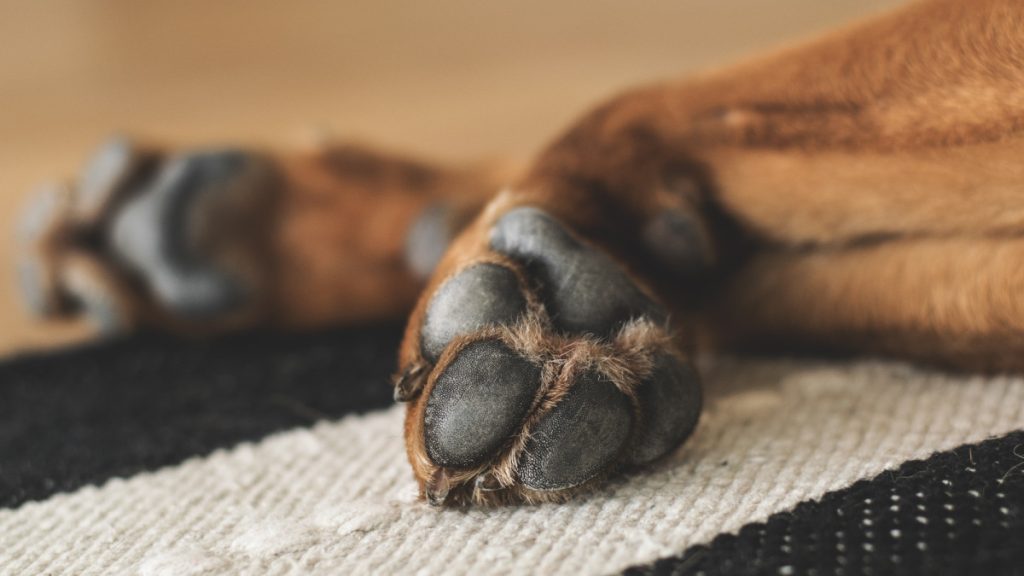When your beloved dog gets a spider bite, it can be a nerve-wracking experience. You worry about their well-being and feel the urge to act swiftly.
But what exactly should you do? Understanding the right steps can make all the difference in ensuring your furry friend’s safety and comfort. In this guide, you’ll discover the simple yet effective ways to treat a spider bite on a dog.
Imagine having the peace of mind knowing exactly how to respond in such situations. Read on to equip yourself with the knowledge that can transform a moment of panic into calm assurance. Your dog relies on you, and with the right information, you can be their hero.
Identifying Spider Bites
Spider bites on dogs can be tricky to spot right away because symptoms might look like other common skin irritations or allergies. Knowing how to identify a spider bite quickly helps you act fast and protect your dog from serious complications. Let’s break down what signs to watch for and which spiders are usually behind these bites.
Common Symptoms In Dogs
Spider bites often cause noticeable changes on your dog’s skin and behavior. You might see redness, swelling, or a small wound where the bite happened. Sometimes, the area looks like a blister or a rash.
Watch for your dog licking or scratching the spot more than usual. They may also show signs of pain or discomfort when you touch the area. Other symptoms include:
- Lethargy or unusual tiredness
- Muscle tremors or weakness
- Excessive drooling or vomiting
- Fever or rapid breathing
If your dog shows these signs, especially if the bite area worsens quickly, it’s important to consult your vet immediately. How often do you check your dog’s skin for unusual spots after outdoor play?
Types Of Spiders That Bite Dogs
Not all spiders are dangerous, but some can cause serious harm to your dog. The most common spiders responsible for bites include:
- Black Widow:Its venom affects the nervous system, causing muscle pain and spasms.
- Brown Recluse:Known for causing tissue damage and skin ulcers.
- Wolf Spiders:Usually cause mild irritation but can still be painful.
Knowing which spiders live in your area helps you better protect your pet. Have you ever seen these spiders around your home or yard? Taking simple steps like keeping your yard clean can reduce your dog’s risk of bites.
Immediate Actions After A Bite
Knowing what to do immediately after your dog gets bitten by a spider can make a huge difference in their recovery. Acting quickly helps reduce pain, swelling, and the risk of infection. Let’s look at how you can respond calmly and effectively right after the bite.
Keeping Your Dog Calm
Your dog’s stress levels can affect how their body reacts to the spider bite. Try to keep them as calm and still as possible. Excitement or running around can spread venom faster through their bloodstream.
Find a quiet spot and speak softly to soothe your dog. If they’re anxious or restless, gently pet them to provide comfort. Have you noticed how pets often mirror your mood? Staying calm yourself can help your dog relax.
Cleaning The Bite Area
After calming your dog, check the bite site carefully. Use lukewarm water and mild soap to clean the area gently. This removes dirt and reduces the chance of infection.
Avoid scrubbing hard or using harsh chemicals. Pat the area dry with a clean towel. Applying a cold compress can help reduce swelling and ease discomfort. Have some clean cloth or gauze ready so you can act quickly if you spot a bite.
Home Remedies For Spider Bites
Discovering a spider bite on your dog can be unsettling, but certain home remedies can help ease their discomfort quickly. Acting promptly with simple treatments can reduce swelling and itching before you seek veterinary care. Let’s look at practical ways you can provide relief right at home.
Cold Compress Application
Applying a cold compress to the bite area helps reduce pain and swelling effectively. Wrap some ice cubes in a clean cloth and hold it gently against the bite for 10 to 15 minutes. Repeat this every hour as needed, but never apply ice directly to your dog’s skin—it can cause frostbite.
I remember treating my dog’s spider bite this way; the swelling went down noticeably within a few hours. The cold not only numbs the area but also slows the spread of venom, giving your dog some relief. Have you noticed how pets often seek cooler places when they’re uncomfortable? This simple trick mimics that instinct.
Using Antihistamines Safely
Antihistamines like diphenhydramine (Benadryl) can help manage itching and allergic reactions. However, you must consult your vet for the correct dosage—dogs process medications differently than humans. Never guess the amount; too much can be harmful.
Once I confirmed the right dose with my vet, giving antihistamines calmed my dog’s irritation and prevented excessive scratching. If you decide to try this, watch your dog closely for any unusual behavior or side effects. Would you feel comfortable keeping some antihistamines handy for emergencies after learning how they can help?
Credit: pethelpful.com
When To See A Veterinarian
Knowing when to take your dog to the veterinarian after a spider bite can be the difference between a quick recovery and serious complications. While many spider bites may cause only mild irritation, some can trigger severe reactions that need professional care. It’s important to watch your dog closely and act quickly if you notice any worrying symptoms.
Signs Of Severe Reactions
Pay attention to sudden changes in your dog’s behavior or health after a spider bite. Look for symptoms such as:
- Difficulty breathing or rapid panting
- Swelling around the face, mouth, or neck
- Excessive drooling or vomiting
- Weakness, trembling, or collapse
- Severe pain or continuous licking of the bite area
If your dog shows any of these signs, it’s a clear signal to seek veterinary help immediately. Have you ever noticed your dog acting strangely after a bug bite? Don’t wait for the situation to worsen.
Emergency Treatment Options
Once you get to the vet, they may provide treatments like antihistamines or pain relief to ease your dog’s discomfort. In severe cases, they could administer fluids to prevent dehydration or antivenom if a dangerous spider species is involved.
Ask your vet about how to monitor your dog at home after the emergency treatment. They might suggest cold compresses or specific wound care to reduce swelling and prevent infection.
Preparing a basic first aid kit for your dog can speed up your response next time. What items do you think are essential for treating bites and stings on the spot?
Preventing Future Spider Bites
Preventing future spider bites is key to keeping your dog safe and healthy. Taking simple steps around your home can reduce spider encounters. Regular checks on your dog help catch bites early and reduce complications.
Spider-proofing Your Home
Spiders like dark, quiet places. Remove clutter inside and outside your home. Keep basements, garages, and sheds clean and dry. Seal cracks and gaps in walls, doors, and windows. Use screens on windows and vents to block spider entry. Store firewood and debris far from the house. Regular vacuuming helps remove spider webs and eggs. Consider natural repellents like essential oils around problem areas.
Regular Dog Inspections
Check your dog’s coat daily, especially after walks. Look for redness, swelling, or small wounds. Pay attention to paws, ears, and underbelly. Use a fine-tooth comb to spot tiny spider bites. Early detection helps prevent infection and serious reactions. Teach family members to watch for signs of spider bites. Promptly clean any wounds with mild soap and water. Contact your vet if you notice unusual behavior or symptoms.

Credit: getodie.com

Credit: www.dogster.com
Frequently Asked Questions
What Are The First Signs Of A Spider Bite On Dogs?
Common signs include swelling, redness, pain, and itching at the bite site. Dogs may also show lethargy, vomiting, or muscle tremors. Early detection helps in timely treatment and prevents complications.
How Can I Safely Clean A Dog’s Spider Bite?
Gently clean the bite area with mild soap and warm water. Avoid harsh chemicals or scrubbing, which can irritate the skin further. Keeping the site clean reduces infection risk.
When Should I See A Vet For My Dog’s Spider Bite?
Visit a vet immediately if your dog shows severe swelling, difficulty breathing, weakness, or excessive drooling. Prompt veterinary care is crucial for serious reactions or if symptoms worsen.
Can I Give My Dog Home Remedies For Spider Bites?
Home remedies are not recommended as spider venom can be dangerous. Always consult a vet before trying any treatment to ensure your dog’s safety and proper healing.
Conclusion
Spider bites on dogs need quick attention and care. Watch for swelling, redness, or pain at the bite site. Clean the area gently with mild soap and water. Use a cold compress to reduce swelling and soothe discomfort. Always call your vet for advice, especially if symptoms worsen.
Early treatment helps your dog heal faster and stay comfortable. Keep your dog calm and prevent scratching. Knowing these steps ensures your dog gets the right care after a spider bite. Stay alert and act fast to protect your furry friend.

